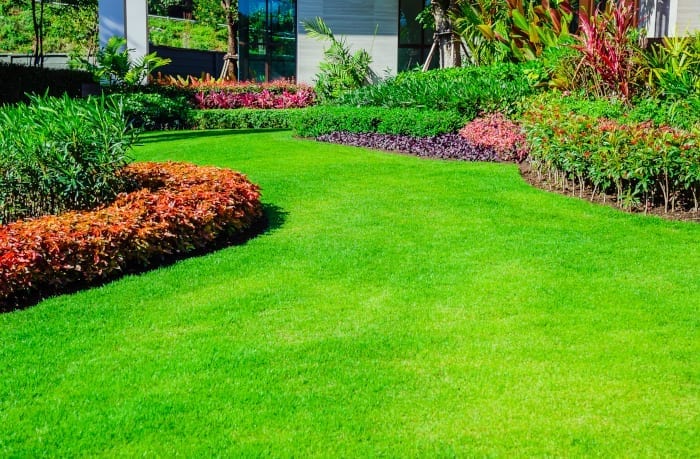What Should I Do to Prepare My Lawn for Spring?

We understand the feeling. It’s been a long winter and warmer weather has you wanting to get outside and start working in the yard. You’re anticipating green grass and blooming plants. A few steps you take in spring lawn preparation will go a long way in having a beautiful lawn this summer.
What is the best way to prepare your lawn for spring?
Here are some simple steps to prepare your lawn and landscape for spring.
- Don’t be too eager. Walking on a wet, saturated lawn will pervasively track it up, leading to destruction. Even though it’s spring and you’re likely itching to begin yard work, stay off your grass until it’s relatively dry. This will also help with soil compaction.
- Clear debris from the lawn and landscape. Get rid of anything you forgot in the Fall. Pick up sticks that have blown down over the Winter. Raking up leaves and thatch buildup will allow to breathe your grass.
For a particularly bad thatch problem, it might be time for a heavier dethatching. To work, and not be harmful, do this in the early spring, before the lawn green up.
- Make a list of things to prune, shrubs to clean out of the landscape beds. If you didn’t cut back your perennials in Fall, now remove old growth. [Related: Early spring also is a good time to prune shrubs before they enter the active growing season.] (See “How and When to Trim Arborvitae.”)
Go the route of bush and shrub trimming selectively. Some trees, plants and shrubs (such as azaleas and rhododendron, here) have their buds set for early flowering. Cutting them back now will significantly reduce their blooms. Look for the bud on the rhododendron plant in the photo below.
- Look for damage. Too much salt runoff can desiccate plants and leave bare patches on the periphery of your lawn. Spring rains often dissolve and help to wash it away. Give your plants a little time to recover as they often come back just fine.
If you’re worried about damage, you can apply gypsum (calcium sulfate) soil conditioner to your soil or lawn. This will allow the salt to dissipate and promote growth.
Check for other signs of injury or disease, like snow mold. (read more about snow mold in lawns here.)
- Fertilize and apply pre-emergent herbicide. Now in springtime would be when you fertilized your lawn as well as a lot of shrubs. Pre-emergent fertilizers will keep them from germinating.
One caveat: if you apply weed killer before the rain is falling, it will just wash away. However, once the soil temperature hits and stays at 55 degrees and higher, crabgrass will begin growing, and that’s when a pre-emergent needs to be applied.
Crabgrass is a warm-season grass. So watch especially the edges of your driveway and along rock surfaces. Bare spots in your grass are prime real estate for weed seeds in the spring, too.
- Don’t seed just yet. When putting down weed pre-emergent, you cannot put down grass seed in that same location. The pre-emergent will preclude the grass seed from sprouting as well. If there are areas you’d like to reseed, the best time for that is a little later in the season.
First, there are different types of grasses. Because you’ll be reseeding, you’ll need to select a quality grass seed type that suits your lawn. Any cheap grass seed mix you can buy will introduce new varieties into your lawn and you will see a difference.
- Wait to aerate. Aerating is a process that can be done at any time, except we do not recommend doing it in the Spring. It exposes the soil to weed seedlings that are abundant this time of year. Summer or Fall is a better option to aerate.
These spring lawn care tips will ensure you use your time outside wisely, and lay down a strong base for the growing season.
